Proof Inc created previs and postvis services for ‘Night at the Museum: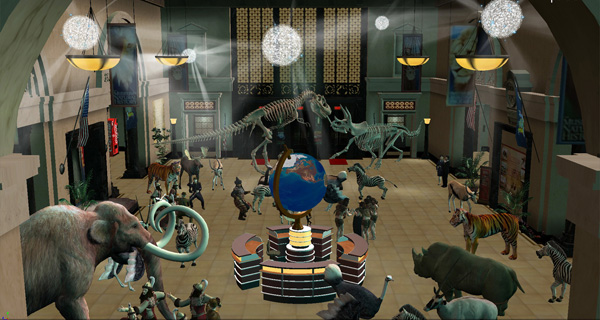
Secret of the Tomb’, wrangling fantastic digital creatures, miniaturizing
the heroes and staging the action.
Proof’s Previs Artists Spend a Night at the Museum |
| Proof Incvisualization house created previs and postvis services for ‘Night at the Museum: Secret of the Tomb’, the third film in the comedy franchise, on several different action sequences. The team began working on the project alongside the production main VFX Supervisor Erik Nash during pre-production and continued on through to end of post as the production’s postvis team. |
 |
|
The team’s previs supervisorEric Benedictworked on the project for 10 months. Initially, Proof was asked to produce the previs on one sequence in which two of the actors appear as three inch tall characters are sucked through one of the museum’s ventilation shafts. From there, Proof was commissioned to develop several more sequences following the adventures of these miniature characters, including the explosion of Pompeii, and the party sequence within the end credits. Story LogisticsTo get started, the project’s art department had nearly all of the environment designs completed for the team, from which they would build lightweight previs models. “All of our environments were referenced Maya files,” Eric said. “In this way, changes or updates to the environment would propagate throughout our scene files. In some cases, the Help Desk and the Natural History Museum Lobby, for example, the sets had already been well established in earlier films, so those couldn't really be adjusted except for some prop placement. |
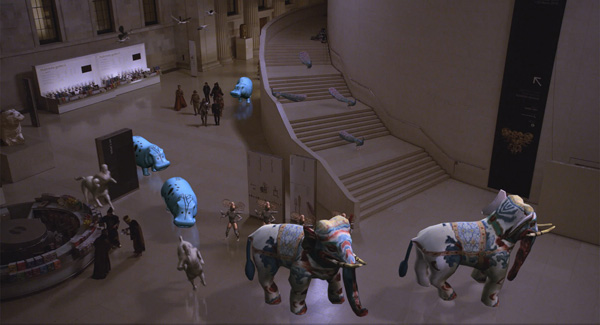 |
|
The ventilation shafts for the miniature characters were already designed in terms of dimension, but since the full length of ductwork was never going to be fully built, the team could focus on building the set in CG to match the storyboards and the essential action beats. Museum MenagerieIn contrast, the level of creature development varied for various reasons. Any creatures established in previous films stayed largely the same. The newcomers were mostly based on real life examples from historical artefacts from some museum or another. Often, the scale was changed to fill up space in the museum, newly come to life. The characters Garuda, a golden bird-like creature, and Xiangliu, the nine-headed serpent, gave the greatest opportunity to explore movement and animations, but the imperative was to keep the character designs true to the artefacts on which they were based. Character models were also referenced Maya files, allowing costume or rig changes to propagate through scenes. |
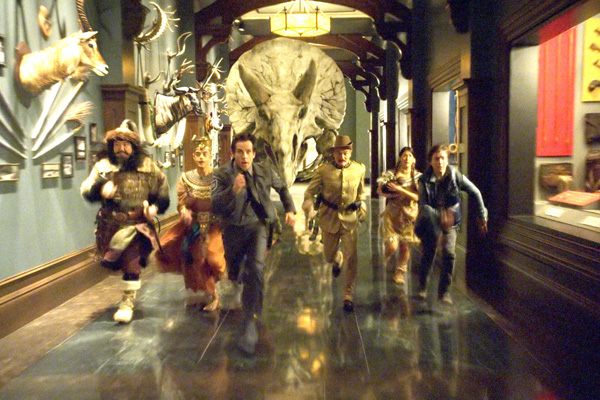 |
|
“For Garuda, the nuances of his personality changed a lot, but the concept of an energetic harbinger of danger was a lot of fun for our animator,Javier Zumaetato design and develop. Trixie and the Lions were huge hulking beasts that start out menacing, but turn into creatures that are more like housepets. We got to animate enormous, dangerous creatures as domesticated animals, which resulted in some fun shots as well.” Stone DemonXiangliu is a statue of nine demon snake heads all sourced from the same stone base. Unlike the other creatures mentioned, he is straightforwardly evil. When the heroes annoy him by waking him up, the snakes tie themselves up in a furious response, reach the end of their finite neck length, and chomp and snap in every direction. The wide variety of ways in which Xiangliu’s interactions with the characters in the plates also created numerous challenges to make him a convincing threat. |
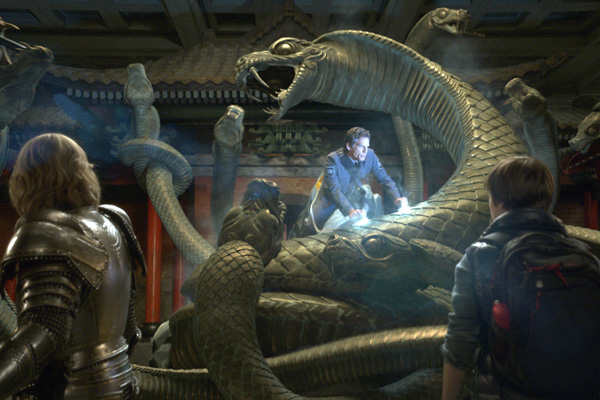 |
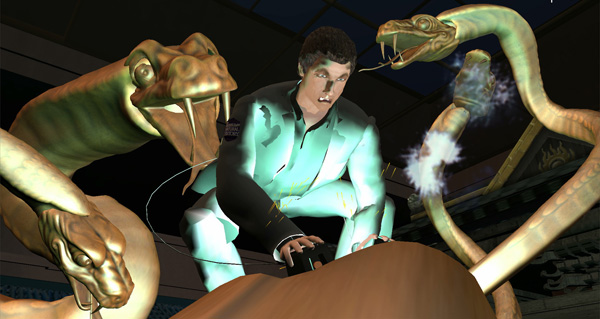 |
|
“We were able to work out the kinks in postvis. We made sure there was continuity from one shot to the next. Our animator Josh Lange came up with countless iterations of one particular shot in which Ben stiller tricks one of the heads into tying itself up in a knot. By the time our job was done, most of the logical thinking and character blocking was done, and the VFX animators could spend their time refining animation to make each shot the coolest version it could be.” Thinking BigEric also explained how previs artists can help make miniaturised characters look more believable. “Each shot with the small characters has to be filmed twice - once with the actors on green screen, and a second time to get the background plate. Whether the background plate is real or digital, we still need to have largely the same kind of information to give to the cameramen or the VFX team. What we do in previs is take our characters and our cameras and film them in two differently scaled environments, and measure them twice so that we can relay the information for each plate. |
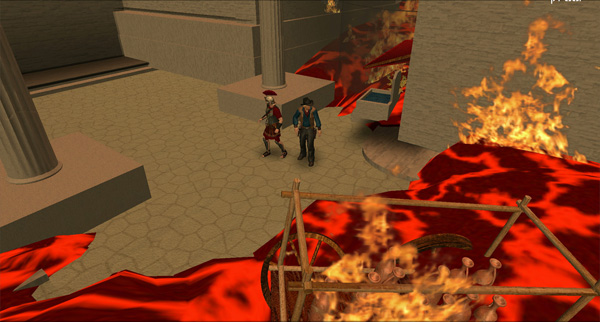 |
|
Nevertheless, a primary challenge of filming different scales and making the final shots look believable is limiting the interaction between differently scaled creatures and set pieces. Because Jed and Octavius' scale had been established in previous movies, making them fit comfortably on a scale model of the city of Pompeii meant that this model had to be extremely big - big even for most museum exhibit rooms, and certainly big for most scale dioramas. The extra hurdle of a full size capuchin monkey resulted in some highly complex shots. “What we ended up doing was cutting down the number of shots in which both Jed, Octavius and Dexter are all visible at once to only a handful. We have almost no wide shots in the sequence, and most of them focus well within the borders of the diorama so that the exhibit room is in the deep background. |
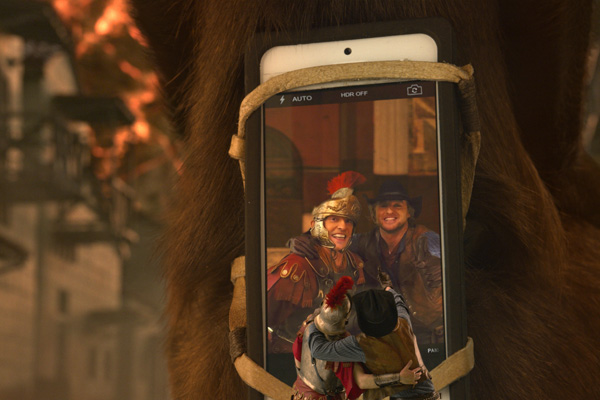 |
StuntvisThe Proof team also contributed stuntvis as a jumping off point for sequences. T times they would interfere minimally with the stunt actors’ performances and the camera work, only aiming to keep screen direction consistent, or adjust character positions for continuity. “But sometimes we would add a lot to the stuntivis,” Eric said. “For example when Larry is jumping through the air to jolt Xiangliu with the defibrillator, the stuntvis originally covered the camera angles and Larry’s action, but we were also able to add the tangle of serpent heads, all with their mouths open preparing for the final strike. We ramped it up so it was really a make or break moment in the story - if this didn't work Larry was done for. “Another beat in that sequence didn't quite work the way the stuntvis team produced it. In between Larry getting flung to the floor and grabbing the defibrillator, the way he escaped one further attack wasn't quite exciting enough. After conversations with EriK Nash, this eventually turned into Larry tying the head up in a knot. We prevised it before any stunt work was done, and it ended up as part of the film. Eric explained that this was both an exciting and demanding project for Proof to work on because it required a large team, allowing them to work directly with VFX Supervisor Erik Nash and several of the VFX vendor studios. “It was an opportunity to interact and share creative ideas and approaches with a diverse group of artists,” he said. “It was also my first chance to animate a great number of creatures from all anthropomorphic walks of life, helping to give each of them an individual personality,” he said. |
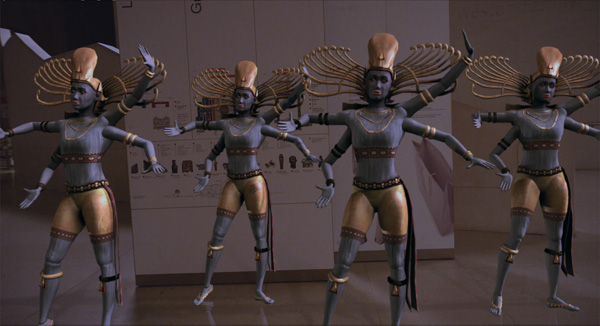 |
|
Less Haste, More SpeedErik Nash noted the Proof team’s ability to turn sequences around very fast. “A number of factors keep us moving quickly,” Eric reflected. “The animators and designers I get to work with can really sell sequences and elevate storyboards and script notes from ideas into production. Also, as painful as it sometimes is, we come to this job knowing that we're going to throw out some material that we work hard on. I think that mental readiness to try something outlandish and new, and just as quickly throw it away if something better comes along, is essential to an effective previs team. It’s also recognising what you need to sell a beat. I think this comes with experience, but some shots can survive with a keyframe or two and we can move on. Other bits of action need a lot more, and that can be tough to discern. When we have the time and the money, we can make any scene look great. It's when an entire sequence needs to be turned around in under a week that we have to fire on all cylinders, divide up the work efficiently and spend time on important story beats and shots.” www.proof-inc.com Words: Adriene Hurst |


















